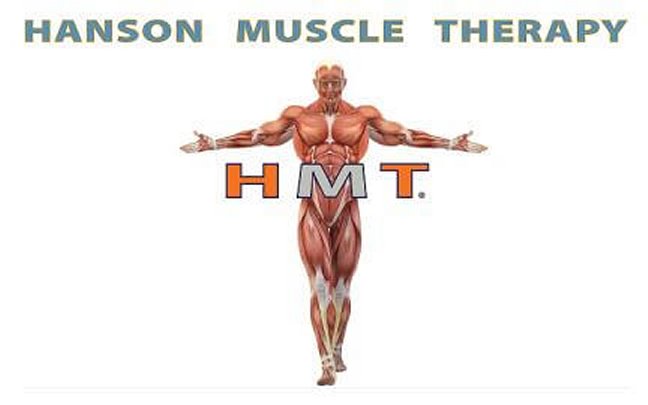 |
HMT
HMT is an advanced manual technique that applies therapy to trigger and acupressure points for immediate relief of muscular pain, tension and dysfunction.
Muscular Imbalance
A core theory within HMT is the concept of muscular imbalance. In the approach to restore optimal wellbeing and performance, muscular imbalance is what helps the HMT provider find where in the body an individual body holds their greatest tension. This tension, or blockage of circulation, is the root of our pain, discomfort, injuries, decreased performance, and declining health.
Muscular imbalance is the idea that there is an uneven pulling force on a joint or a limb. So much so that this uneven pulling throws the body out of balance or alignment. Physical, mental and emotional-, strain due to overuse, trauma or stress cause an accumulation of tension, i.e. spasm or contraction of certain muscles. Any time there is a muscle shortening (contraction), there is a subsequent muscle lengthening of the opposing muscles, hence causing a muscular imbalance and an uneven pulling force.
For a muscle to reach its strength potential it has to be balanced. A balanced muscle must be able to shorten (contract) and lengthen (stretch) within its full range. A balanced muscle is able to oppose but not overpower the force from its antagonistic muscle(s), like a balanced seesaw. When there is excessive tension / shortening in one or more muscles, muscular balance or harmony is lost. This produces pain due to a deprivation of oxygen in the shortened muscles. This contraction leads to more pain due to an increased pulling force on the muscles tendons and increased strain to its surrounding ligaments. Muscle shortening causes decreased range of motion, poor posture with decreased joint space, decreased vascular circulation, inhibited lymphatic drainage, as well asĜ muscle weakness. When the body is out of ALIGNMENT there will be excessive friction, pressure, compression and excessive pulling that leads to dysfunction, pain and inflammation. This muscular imbalance can become chronic and ultimately lead to neuropathy, joint pathology and joint degeneration.
Reading Body Feedback
HMT is a diversified system that integrates feedback from range of motion assessment, postural evaluation and specific muscle testing, to pinpoint areas of myofascial tension. HMT utilize feedback from each individual patient’s muscular imbalances to select the primary muscles and reflex points to treat for each individual condition. In this way it is possible to detect which muscles are contracted / shortened and where an individual is holding their tension.
Circuit Breakers
Accumulation of tension in muscles, fascia and tendons manifests as hypersensitive myofascial reflex points, known as acu- points or ashi- (trigger) points . Those reflex points act as circuit breakers and when over loaded with excessive tension can give rise to local or referred pain.
Any reflex points can be short circuited by physical stress in the form of acute overload, overwork, fatigue or direct trauma to the muscle they are located in.
Mental/Emotional stress as when a person is not in harmony with their own circumstances (life situation, feel overwhelmed or stuck) will also cause a short circuit in related reflex points and built up of tension in muscles were an individual holds his or her stress. Those reflex points can also be stressed indirectly by other reflex points, joint dysfunction, or internal organ dysfunction.
HMT is a bridge between East and West
HMT’s use of range of motion assessment and postural evaluation together with manual testing of individual muscles, fused with the ancient treatment of acupuncture points and meridians creates a superior therapy for immediate pain relief. HMT is a holistic therapy that bridges ancient Chinese acupuncture and modern Western physical therapy / sports medicine.
‘Getting to the Point’
There are approximately 700 acu- points on the human body and all 360 skeletal muscles can develop multiple ashi- (trigger) points. The acu- points have definite anatomical locations while the ashi- point’s locations are not fixed.
The proper point to treat is not always located at the site of pain, but rather at the site of maximum accumulated tension. Due to the number of points possibly related to an injury, the success of the therapy rely on the ability to select the right point(s) for each specific injury and every individual.
Then, with the unique use of an indicator muscle test for therapy localization, the exact location of the overloaded reflex points are pin pointed.
HMT takes away the “guesswork” or the “hit and miss” approach in the selection of appropriate reflex points for a specific condition.
RE-SETTING THE CIRCUIT-RELEASING THE TENSION
Once a primary reflex point has been localized, it should be released of its
excessive tension with deep friction massage. Deep intermittent digital pressure
to a reflex point in a specific direction causes a form of “depolarization”.
Digital pressure on a primary reflex point will elicit local and or referred
pain. Complete release of all tension with digital pressure to a reflex point
will cause all elicit pain to completely disappear. This will lead to immediate
pain relief and restored function.
|











